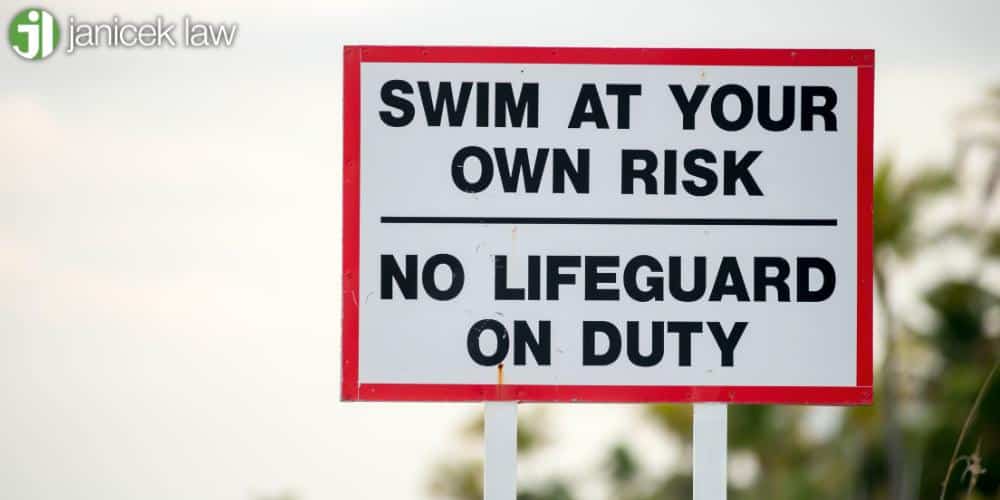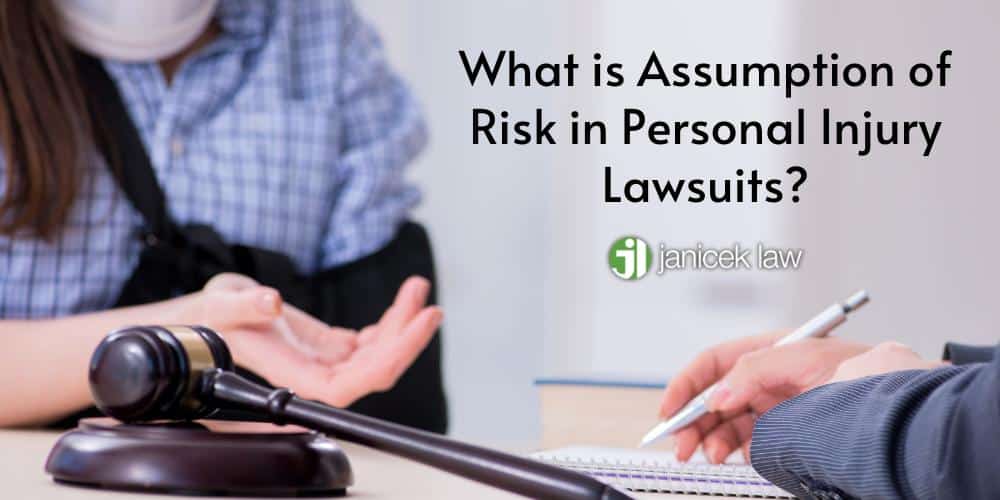Most activities in our day-to-day lives carry inherent risks of harm that, for the most part, we must accept. When we’re driving, there is always an inherent risk of crashing. When we’re eating fast food every day, there is always an inherent risk of suffering health complications like diabetes or high cholesterol. The list could go on. Some activities and their inherent risks are more dangerous than others, and when we do suffer harm (such as personal injury or wrongful death), we do have the option of taking legal action. However, it’s important to note that if we sue, the defendant may have grounds to use the assumption of risk defense. Assumption or risk refers to a legal doctrine which states that a plaintiff is either eligible for zero compensation, or reduced compensation, if the defendant can prove that the plaintiff became injured after engaging in dangerous activities with known risks. This is an important affirmative defense to have full understanding of before starting any personal injury case. Below, the legal team at Janicek Law explains everything you need to know about the assumption of risk defense in civil lawsuits.
If you or a loved one suffered catastrophic injuries or wrongful death due to someone else’s negligence, you may have grounds to file a civil lawsuit and recover compensation. Call 210-366-4949 to schedule a free consultation with an experienced personal injury attorney at Janicek Law today.
What is the Assumption of Risk Defense?
Assumption of risk is a legal defense in personal injury cases which prevents a plaintiff from recovering damages from a negligent defendant because they have proven that the plaintiff engaged in a dangerous activity despite knowing the risks.
In order to successfully use the assumption of risk defense, the defendant must prove the following:
- The plaintiff actually knew about the inherent dangers and risks involved in a specific activity,
- And the plaintiff accepted the known risk anyway through a written agreement, words, and/or actions.
The reason why this is a valid defense in a personal injury case is because the plaintiff assumed the risk before engaging in a dangerous activity, therefore, the defendant owes no legal duty in return. In situations like this, the first element of negligence – duty of care – is not met. As a result, the plaintiff cannot recover damages for their injuries caused either by the inherent risks of the situation or the risks created by the defendant’s negligence.
Assumption of Risk Example
For example, let’s say that a plaintiff decided to pet a dog through a neighbor’s fence despite there being a sign on the fence saying: “Beware of Dog.” The dog bit the plaintiff’s hand to the point where they suffered a finger amputation and an infection.
The plaintiff decides to file a personal injury claim against the dog owner, and the dog owner uses the assumption of risk doctrine in their defense. The dog owner claims that the plaintiff’s injury was the direct result of engaging in an inherently dangerous activity – petting their dog through the fence – despite the “Beware of Dog” sign on the fence. Therefore, the plaintiff decided to pet the dog at their own risk, which means they cannot recover damages for their dog bite injury.
Primary vs. Secondary Assumption of Risk
There are two main types of assumption of risk: primary and secondary.
Primary Assumption of Risk
Primary assumption of the risk means that the person participating in a dangerous activity knows about the risks involved and accepts these risks through either words or conduct. The defendant is relieved from the first element of negligence, duty of care, by the plaintiff’s acceptance of risks inherent to the situation. Proving primary assumption of risk in a personal injury case means the plaintiff will have a complete bar from recovering any damages associated with the harm they suffered.
For example: when you go rock climbing or jumping at a trampoline park, you usually have to sign a waiver beforehand which states that you may suffer harm from participating in the activity, and potential liability does not belong to the company in the event that harm occurs. By signing these waivers, people are essentially accepting the primary assumption of the risk. Therefore, they cannot recover compensation from the company unless it acts negligently in some other way, by failing to ensure that all equipment is safe for use, for example.
Secondary Assumption of Risk
Secondary assumption of risk means that the defendant has a continuous duty of care to protect the plaintiff from harm, and the plaintiff is aware of risks associated with the defendant’s potential negligence, and yet continues engaging the activity anyway. If the plaintiff becomes injured after accepting risks associated with the defendant’s potential negligence, they could still recover compensation, albeit reduced compensation. In states that have comparative negligence rules, such as Texas, secondary assumption of the risk can help determine specific percentages of fault in personal injury cases.
Let’s use a car accident as an example. All drivers owe each other a continuous duty of care to drive safely, carefully, and soberly in order to prevent harm to themselves or others. When driving, there is always an inherent risk of crashing and suffering injury or death if someone were to act negligently on the roads, and we all have to accept this risk everyday in order to get to where we need to go. No driver is perfect, no matter how carefully they drive, so everyone has the potential to be negligent and crash.
In car accident cases where two parties each share a percentage of fault, each party’s amount of compensation will be reduced as long as it’s below a specific percentage. Texas follows a 51% bar for comparative negligence, which means that someone who is more than 51% at fault for an accident cannot recover compensation. If someone is less than 51% at fault, then their compensation will be reduced by their percentage of fault. For example, if a driver is deemed to be 15% for an accident, then their amount of compensation will be reduced by 15%.

Express Assumption vs. Implied Assumption
There are two main ways that a plaintiff can accept the assumption of the risk, either expressly or through implication.
Express Assumption
Express assumption means that a person obviously accepts a particular risk through a verbal or written agreement. A common example is signing a liability waiver before engaging in activities such as rock climbing, contact sports, or jumping at a trampoline park. These waivers don’t provide people or companies with full legal protection; there are usually loopholes. The waivers must explicitly discuss a particular risk, and if a person becomes injured from an entirely different risk not covered by the waiver, then they could definitely sue for damages. Additionally, liability waivers do not protect defendants from reckless conduct, only negligent conduct.
Implied Assumption
Meanwhile, implied assumption of risk means that a plaintiff uses their conduct to demonstrate that they knew the risks associated with a dangerous activity, and yet they continued the activity anyway. If implied assumption qualifies for the complete defense of primary assumption of risk, then the plaintiff will not recover compensation. But if the implied assumption qualifies for secondary assumption of risk, then the plaintiff will likely receive compensation reduced by their percentage of fault.

Call San Antonio Personal Injury Lawyers at Janicek Law Today
If you or a loved one suffered catastrophic injury or wrongful death due to someone else’s negligence, you may have grounds to take legal action. At Janicek Law, we handle all sorts of personal injury claims such as car accident claims, premises liability claims, product liability claims, medical malpractice claims, and so much more. We are passionate about defending the rights of people in the San Antonio area and helping them recover fair settlements for their suffering. Call 210-366-4949 to schedule a free consultation with an experienced personal injury lawyer at Janicek Law today.

